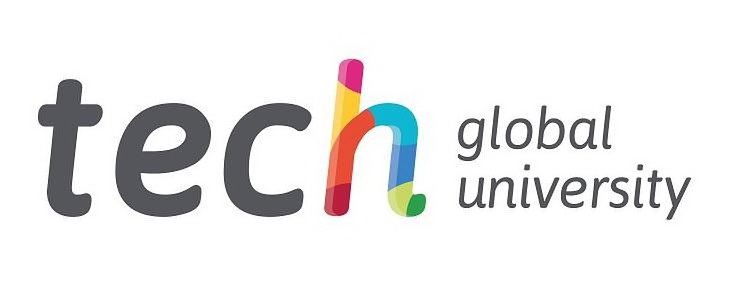TECH Global University: A Comprehensive Guide to a Leading Digital Institution
TECH Technological University, often referred to as TECH Global University, has emerged as one of the most prominent digital universities in the world. With a focus on offering accessible and high-quality education. The University provides a wide range of courses across various disciplines. Notably, leveraging the power of online education to reach students globally. In this article, we will delve into different aspects of the university, including its ranking, accreditation, reviews, and what makes it a top choice for international students.
Overview of TECH Global University
TECH Global University is a private, international university that operates entirely online. With a strong focus on technological innovation and digital learning, it offers programs across disciplines. Especially, like engineering, health sciences, business, education, and technology. The university prides itself on its flexibility, allowing students to pursue degrees and certifications from anywhere in the world.
The university’s commitment to digital learning is evident in its wide variety of courses and programs that cater to diverse academic and professional needs. From bachelor’s and master’s degrees to diplomas and specialized certifications. Hence, The Global University provides students with the tools and knowledge necessary to thrive in today’s digital economy.
TECH Global University Reviews
When it comes to student feedback, TECH Global University has received a range of reviews. Mostly highlighting the convenience and flexibility of its online programs. Many students praise the institution for offering high-quality education that fits around their personal and professional commitments. The availability of courses in both English and Spanish makes it even more appealing to a global audience.
However, like any institution, there are some areas of concern. A few reviews mention challenges with technical support or navigating the university’s online platform. Despite this, most students find The University to be a reputable and reliable institution for acquiring knowledge and skills in various fields.
TECH Global University Ranking
While The University is relatively new compared to traditional universities, it has gained significant recognition in the online education space. Forbes has consistently ranked TECH Global University among the best online institutions globally. Thus, highlighting its commitment to technological innovation and the quality of its programs. The university’s digital-first approach and comprehensive curriculum make it a strong competitor in the global higher education market.
In Spain, where TECH Global University is headquartered, it is considered one of the leading digital universities. Though not as established as older, traditional universities in Spain, TECH’s reputation is rapidly growing due to its innovative teaching methods and flexibility for students across the globe.
TECH Global University Courses
TECH Global University offers a broad array of courses designed to cater to different academic and professional needs. These courses range from short-term certifications to full degree programs. Some of the most popular disciplines include:
- Engineering: Specialized courses in areas like software engineering, mechanical engineering, and DevOps prepare students for careers in rapidly growing tech sectors.
- Health Sciences: From nursing to medical informatics, it offers comprehensive programs for those looking to advance in the healthcare field.
- Business and Management: MBA programs and other business-related courses help students develop leadership and management skills in a global context.
- Education: Courses aimed at educators, including specializations in teaching methods and educational technology, allow professionals to enhance their teaching skills.
All courses are 100% online, allowing students to balance their studies with work and personal life, making it an ideal option for working professionals and lifelong learners.
TECH Global University Accreditation
Accreditation is a critical factor when choosing a university, especially in the online education space. TECH Global University is fully accredited, ensuring that its degrees and certifications are recognized globally. It has received accreditation from several recognized educational bodies, confirming the quality and legitimacy of its programs.

However, some students have raised questions about the specifics of TECH’s accreditation in certain regions. Especially when transferring credits or applying for jobs internationally. To clarify, The University’s degrees are recognized in Europe and various other countries. However, students are always encouraged to verify local accreditation requirements in their specific countries of residence or employment.
University Location
TECH Global University is based in Spain but operates entirely online. With its headquarters in Spain, the university has a global reach and serves students from all over the world. Its digital presence allows for seamless access to its courses and programs, no matter where students are located. This makes TECH Global University particularly appealing to international students seeking flexible and affordable education without the need to relocate.
Frequently Asked Questions
Is TECH University in Spain accredited?
Yes, The University is fully accredited and recognized by educational authorities in Europe and other regions. However, it’s essential for students to verify the specific accreditation requirements in their own countries.
What is the world’s largest online university?
The University claims to be one of the largest online universities in terms of student enrollment, especially in the Spanish-speaking world.
Is Global University recognized?
Yes, the University is recognized and accredited, though students should always check if the degrees align with their local accreditation requirements.
Is International Technological University public or private?
TECH Global University is a private institution with a strong focus on technological innovation and online education.
What is the rank 1 university in Spain?
Currently, traditional universities like the University of Barcelona and Autonomous University of Madrid are ranked highly in Spain, but The Global University is making a name for itself in the online education sector.
What GPA do I need to study in Spain?
Admission requirements, including GPA, vary depending on the program and level of study. TECH Global University, being an online institution, often has flexible admission criteria compared to traditional universities.
Is Spain a good country for international students?
Yes, Spain is known for its vibrant culture, affordable living costs, and high-quality education, making it an attractive destination for international students.
Is it worth it to study in Spain?
Absolutely. Spain offers a unique combination of quality education, affordable tuition, and a rich cultural experience, which is appealing to both local and international students.
How much does it cost to study in Spain?
The cost of education in Spain varies depending on the institution and program. The Global University offers affordable online courses, making it a cost-effective option for many students.
Conclusion
TECH Global University stands out as a leader in digital education, providing accessible, high-quality, and accredited courses to students across the globe. With its strong focus on flexibility, innovation, and technological advancement. Thus, it has quickly become a top choice for students looking to pursue higher education online. Whether you’re seeking to advance your career or acquire new skills, TECH Global University offers a variety of programs to meet your needs, all from the comfort of your home.











